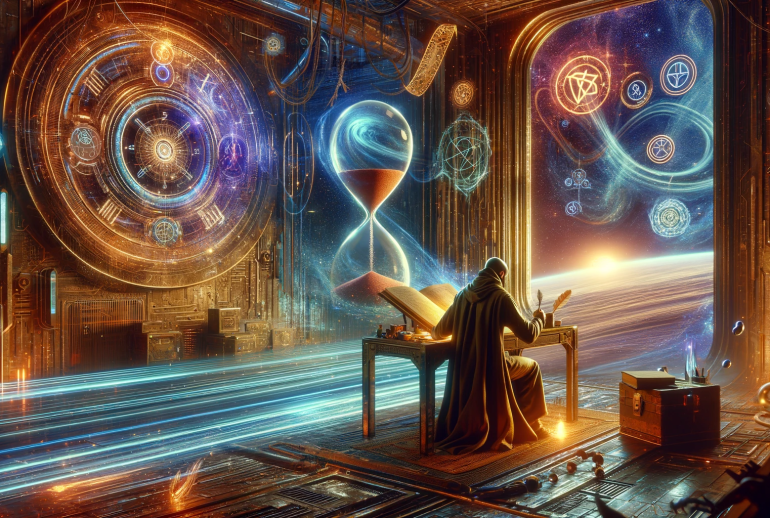World-building is a literary art that goes far beyond the creation of physical landscapes and cultures. It also encompasses the intricate weaving of time and history into the fabric of your fictional universe. By incorporating a sense of history, evolution, and time progression, you breathe life into your world, allowing readers to feel its depth and authenticity. In this exploration, we’ll delve into the art of integrating time and history into your world-building, uncovering the transformative power it brings to your storytelling.
The Significance of Time and History
Before we delve into the techniques of incorporating time and history into your world, it’s crucial to grasp their significance in the world-building process:
Depth and Authenticity: Time and history add layers of depth and authenticity to your world. They create the illusion of a living, evolving realm with a past that has shaped its present.
Character Motivations: Characters are products of their world’s history and the events that have unfolded over time. Understanding this history helps you craft more compelling character motivations and backstories.
Conflict and Drama: Historical events and the passage of time can serve as sources of conflict and drama within your narrative. They provide a rich backdrop against which your characters’ stories unfold.
Creating a Historical Timeline
One of the most effective ways to infuse your world with a sense of history is by creating a comprehensive historical timeline. Consider these steps:
Eras and Ages: Divide your world’s history into distinct eras or ages. Each era can be characterized by specific events, cultural shifts, or technological advancements.
Key Events: Identify key historical events that have shaped your world. These can include wars, revolutions, natural disasters, or the rise and fall of civilizations.
Cultural Evolution: Explore how cultures, societies, and belief systems have evolved over time. Consider changes in religious beliefs, political ideologies, and social norms.
Heroes and Villains: Introduce legendary figures or infamous villains from your world’s history. These characters can be sources of inspiration or cautionary tales for your current generation of characters.
Time Progression and World Evolution
Incorporating a sense of time progression into your world-building involves recognizing that your world is not static. It undergoes changes and developments over time, much like our own world.
Technological Advancements: Consider how technology has evolved in your world. What are the key inventions or discoveries that have shaped the lives of its inhabitants?
Cultural Shifts: Explore cultural shifts that have occurred over the ages. How have these shifts influenced art, music, fashion, and societal values?
Geopolitical Changes: Reflect on changes in borders, alliances, and power dynamics among nations or factions. How have historical conflicts and alliances left their mark on your world’s political landscape?
Environmental Shifts: Think about environmental changes, such as the rise and fall of civilizations due to climate shifts, natural disasters, or the depletion of resources.
Character Backstories and Motivations
Your characters are products of their world’s history, and their motivations are often deeply rooted in its past. Here’s how to use history to enrich your character development:
Ancestral Legacies: Explore ancestral legacies and how they influence your characters’ identities and choices. Ancestral curses, family feuds, or inherited responsibilities can add depth to your characters.
Historical Trauma: Consider how historical events or traumas have affected your characters’ families or communities. These experiences can shape their beliefs, fears, or desires.
Aspirations and Revolutions: Characters may be driven by the desire to emulate or rebel against figures from their world’s history. Historical figures can serve as inspirations or foils for your characters.
Historical Knowledge: Characters with knowledge of their world’s history can use it strategically, whether as scholars, diplomats, or leaders. Historical wisdom can be a valuable asset.
The Art of Foreshadowing and Mystery
Your world’s history can be a treasure trove of foreshadowing and mystery. By hinting at past events or unresolved mysteries, you can intrigue your readers and keep them engaged:
Unsolved Mysteries: Introduce unsolved mysteries or historical enigmas that characters may seek to unravel. These mysteries can serve as compelling plot points.
Echoes of the Past: Explore how echoes of past events reverberate in the present. Characters may encounter relics, ruins, or legends that hint at forgotten history.
Historical Artifacts: Consider the significance of historical artifacts or documents. They can be coveted items, sources of power, or keys to unlocking secrets.
Foreboding Prophecies: Incorporate prophecies, legends, or omens from your world’s history that foreshadow future events. These can add an element of fate or destiny to your narrative.
In Conclusion
Integrating time and history into your world-building elevates your storytelling from mere description to a profound exploration of the past, present, and future. By crafting comprehensive historical timelines, understanding the evolution of your world, and using history to shape character motivations, you breathe life into your fictional universe. History becomes a character in itself, influencing the choices, conflicts, and destinies of your characters. As you embark on the journey of world-building, remember that it’s not just about the physical aspects of your world but also about the passage of time and the stories that have left their mark on its tapestry.



